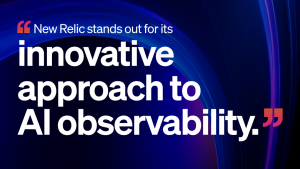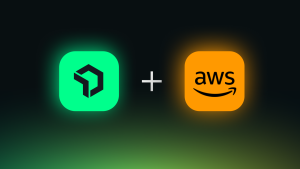Every new leap forward in technology promises to accelerate innovation velocity. Yet each layer introduces exponential complexity that creates the opposite effect: analysis paralysis, deployment anxiety, and debugging nightmares. We’re operating in an era where system complexity has outpaced our ability to reason about it. The convergence of AI workloads, cloud-native architectures, and real-time data processing has created a perfect storm of observability challenges:
- Distributed tracing complexity: Multi-service transactions spanning hundreds of microservices.
- Data volume explosion: Telemetry data growing exponentially faster than infrastructure budgets
- Context-switching overhead: Engineers spending 60%+ of their time on toil instead of feature development
- Deployment uncertainty: Fear of production deployments due to insufficient system visibility. You’re afraid you didn’t check under every hood before deploying.
Join us for the New Relic Now 2025 Winter Release Event (AMER | EMEA | APAC) to learn how our platform is designed to solve exactly these challenges and more.
Our Technical Thesis
Our unified Intelligent Observability platform is architected around a core principle: Transform system complexity into operational confidence through intelligent automation and unified data correlation.
And to do this, you need 3 non-negotiables from your observability platform.
- Intelligence at the Source: To automate analysis and give you answers, not just data.
- Enterprise Agility, Uncompromised: To give you the choice of open standards with the power of an enterprise backend.
- Accelerating the Business Engine: To ensure observability is a financial accelerator, connecting code directly to commerce.
The product announcements we have for you are delivering smart intelligence to automate your answers, guaranteeing agility without compromise by merging open standards with enterprise scale, and shifting your focus from code to revenue by linking system health directly to profitability and customer experience–so you can operate and grow your business with total confidence.
Turning Industry Trends into Results
We’ve just published our latest annual Observability Forecast, where we surveyed thousands of engineering and IT leaders across industries to answer a critical question: What’s the real cost of observability complexity in the AI era? The findings aren’t just concerning–they reveal an urgent transformation already under way. Here are just some of the insights we’ll dive into:
- Engineers currently spend 33% of their time firefighting or addressing disruptions.
- AI adoption was the top driver of observability demand, cited by 45% of executive leaders–more than any other factor.
- Organizations are adopting AI to accelerate innovation, but without proper observability, AI workloads are actually increasing the firefighting burden.
- High-impact outages now cost organizations a median of $2M per hour.
In response, 52% of organizations plan to consolidate onto unified platforms in the next two years. And instead of engineers manually correlating logs and hunting for root causes, intelligent systems can automatically identify patterns, predict issues before they become outages, and provide instant context during incidents. Our research reveals that the firefighting tax is not inevitable–it’s a choice. Companies that invest in unified, AI-powered observability are already freeing their engineers from reactive work cycles and redirecting that energy toward innovation.
This is why every innovation we’re announcing today is built to deliver the intelligent automation and direct connection to revenue required to transform complexity into confidence.
The Two Sides of AI-Powered Observability
The pace of AI innovation hasn’t slowed down. In fact, it’s speeding up. The latest wave is all about agentic orchestration and workflows. The move to agentic is a natural evolution over the fairly linear LLM use cases of a year ago, and it unlocks amazing new ways to reduce human toil across a variety of domains, from incident response to code writing and research. But along with these new capabilities comes additional complexity. It’s much more difficult to monitor, debug, and govern agentic systems than simple LLM-enabled chatbots. This creates a dual opportunity that transforms how we think about observability entirely.
We’re seeing two complementary revolutions happening simultaneously:
- A massive upswell in the demand for Observability for Agentic AI: Providing the visibility needed to accelerate AI adoption by making complicated, agentic, and even multi-agent AI systems transparent and debuggable.
- AI for Observability: Using AI techniques, including agents, to generate intelligent insights about the health and performance of software and automate actions across software development and incident management toolsets, helping your technical teams create self-healing software.
Observability for AI: Making AI Agents Explainable and Manageable
For today’s modern AI-powered applications, monitoring, understanding, and debugging the actions in a multi-agent system is very difficult. It’s as complex as any other software with distributed/micro-service architecture, but there’s a massive twist: the use of probabilistic techniques. LLMs add a new layer that’s hard to evaluate and even harder to fix when something isn’t working. That’s because most of the time the engineer has limited control over how the model itself functions and can only influence it through methods outside the scope of a traditional engineer’s skillset, such as prompting, use of unstructured context, agentic memory, and orchestration, among many other things.
At New Relic Now Winter 2025, we are excited to announce Agentic AI Monitoring, an expansion of our existing AI Monitoring capabilities that provides automatic, detailed visibility into every agent and tool call within your multi-agent collaborations, all on top of our best-in-breed APM and infrastructure monitoring capabilities. You get granular insights into tool utilization, performance, and errors with a view that shows which agents and tools were called, in what order, and key performance data. No additional instrumentation required—this is all done through the same APM agents you set up when you onboarded to New Relic. We are also releasing support for Microsoft’s AutoGen agent communication framework for Python-based integrations. And of course, we are always continuing to enhance our LLM Monitoring to include new APIs and protocols, now including support for ConverseAPI (AWS Bedrock’s API for building AI applications with LLMs).
AI for Observability: Intelligence at Every Layer
The same AI techniques that power these agentic workflows can be applied to observability itself, creating intelligent agents that reason over problems in your system the way your engineers do, but at machine speed and scale. And to do this, those AI agents need to be experts at using your tools like New Relic and accessible wherever you or your team members work.
At New Relic Now Winter 2025, we are proud to announce the New Relic MCP Server, the best way to connect any AI agent or capability from across your toolchain to New Relic data and insights. We believe you should have the freedom to choose your tools, not be locked into them. That’s the beauty of surfacing New Relic AI insights via MCP—the protocol can be used by virtually any AI tool or agent, from GitHub CoPilot to ChatGPT to Claude Code and even your homebrewed agents. Your choice. This means you can bring all your observability data and deep insights from New Relic AI directly to the AI tool of your choice and take action, right from your workflow.
Now, when an alert fires, you can conversationally ask the system to generate an AI summary, trace dependencies, and analyze logs to find the root cause in minutes, drastically reducing downtime. You can ask the system to identify potential failure patterns in your system. Then you can drill down into threads and metrics to find and fix the root cause before it ever becomes a user-facing incident. And before making a deployment, which often leads to system failures, ask the New Relic MCP server to check for ongoing or potential issues. This helps engineers avoid pouring fuel on production fires they may be unaware of.
At New Relic, we are always about meeting customers where they actually work – not forcing you to context-switch, tab-switch, window-switch. That breaks every engineer’s flow. We are designing the New Relic MCP Server to enable seamless, standardized interaction between New Relic and the growing ecosystem of AI tools that support MCP.
New Relic Logs Intelligence: From Data Deluge to Actionable Decision Making
Modern distributed systems bring a lot of advantages, but they also bring a lot of complexity. And one of those complexities are the unprecedented rates at which logs are generated.
Furthering this complexity and deluge are AI systems themselves—the complexity of these agentic meshs and the complexity that cross-platform MCP could introduce, all of this increases the capacity to generate even more logs. But these systems also have the capacity to change our troubleshooting dynamics.
Logs are the backbone of troubleshooting, but they are also often a source of immense complexity and manual effort. You can potentially have:
- 500GB+ daily logs per 100-node cluster
- 10,000+ log lines per transaction across services
- Verbose model inference logs with high cardinality metadata that burdens AI workloads
- Distributed logging from thousands of edge nodes
Traditional log management becomes a performance and search nightmare at this scale. What we observe at New Relic is that over 50% of our customers search for “Error” or some variation of “Error” in the Logs UI. This makes sense because most users aren’t sure where to start with their search. The problem is, that leaves ALL this log data, over 99% of your logs, unsearched when there could be a very valuable story hidden amongst all those records. If only there were a way to have a machine search them and present to us what we need to know. If only.
At New Relic Now Winter 2025, we’re happy to announce that we are releasing new capabilities, what we call Logs Intelligence, to remove the manual time and effort required to reduce Mean Time To Resolution and extract critical insights. Logs Intelligence encompasses features that will make the life of every practitioner easier, lowering the barrier of entry to make any logging user a power user and to help reduce Mean Time To Resolution, Insight, Detection, and increase Mean Time spent with family and friends.
- AI Log Summarization for Alerts provides intelligent log analysis, analyzing over a hundred thousand log records related to an alert incident, use named entity recognition to identify dominant error patterns and anomalies, and give you a structured analysis of what would be unstructured log data.
- Scheduled Search and Reports automates repetitive query executions with a proactive, consistent flow of critical insights when you need it, where you need it, and ultimately enables you to get that information to stakeholders automatically.
- We are also including Fine Grain Access Control for compliance and security, enabling granular control over access to sensitive logs based on your access and data policies.
At New Relic, we are committed to making the lives of every logging user easier through reduced complexity and time savings.
Enterprise-Grade OpenTelemetry
With New Relic, the ability to normalize data from a mixed environment is a powerful differentiator, providing a unified view of all dependencies across all of your services. We’ve taken pains to ensure that the migration to and from OpenTelemetry is seamless, without updates to dashboards or alert conditions, giving you the confidence to scale. Our customers want the flexibility to have an open-source observability stack, and they want to reduce their overall observability costs. At the same time, they need a robust, enterprise-grade backend for their data with platform support when they need it. We offer our customers solutions for every stage of this journey.
- Completely OpenTelemetry. With our native OpenTelemetry Protocol (OTLP) support and APM+OTel UI Convergence, you can get our curated experiences out of the box with vanilla OpenTelemetry. And because New Relic offers backwards and forwards compatibility, there’s no need to worry about ever evolving OTel specs—there’s no need to rewrite dashboards or alerts, it just works.
- Hybrid OpenTelemetry. New Relic also fully supports customers who have a hybrid OTel environment, with our native agents being compatible with OTel SDKs.
- OpenTelemetry with Kubernetes. Customers are able to use New Relic Distributions of the OpenTelemetry Collector (NRDOT) as a drop-in replacement for the OpenTelemetry Collector, including support and configuration. This is a telemetry collector that simplifies how enterprises adopt OTel, especially when running in a gateway mode. We have built specific, lightweight distributions for common use cases like host and Kubernetes monitoring, removing the complexity of manual setup and providing a pre-configured path to get started with confidence.
Our broad support for OpenTelemetry works in large part thanks to the New Relic database (NRDB). Our powerful time series database is able to support the vision of OpenTelemetry, with a SQL-like rich language that allows you to query across all signals: metrics, traces, logs in a single query. Questions such as, “What is the memory utilization of the pods that served requests for these specific user sessions?” can easily be answered in New Relic Query Language (NRQL), which is not always the case in some of our competitors’ offerings.
Retail: Turning Customer Interactions into Revenue Growth
Everything we are presenting at New Relic Now Winter 2025 is about helping engineers navigate complexity with confidence. But our ultimate mission is to help our customers drive business growth. And nowhere is the connection between engineering and business more critical than in retail, especially with the holiday season fast approaching. In the retail world, user experience is everything. You need to deliver on the promise of a seamless digital experience–from a customer’s first tap to the final order confirmation. This all directly impacts your brand and your revenue. You’re not just selling products; you’re selling a frictionless, reliable, and engaging experience.
We have just released our annual Observability Forecast for Retail & eCommerce, and in it, the research shows that Digital Experience Monitoring is scaling fast. It fuels omnichannel operations, tracking performance across websites, devices, apps, payment systems, and POS terminals—all for the sake of protecting the customer journey. Because ultimately, the customer experience is the differentiator. A single technical issue can lead to massive cart abandonment and lost revenue. The median hourly cost of a high business impact outage is $1M for retailers, so the pressure for businesses’ mobile presence to perform is incredibly high.
The trouble is, while mobile-first shopping has come to dominate, the issues customers encounter are too often invisible. Mobile application issues are notoriously difficult to debug because they occur on client devices across diverse device configurations, operating systems, and network conditions that are impossible to replicate in development environments. Teams waste hours trying to reproduce crashes and user experience issues based on limited crash reports and telemetry data alone, while privacy regulations make many organizations hesitant to implement session recording due to PII concerns. You can’t optimize what you can’t see, which introduces a whole new level of complexity.
At New Relic, we’re committed to providing our Retail customers with products designed to directly solve these most critical e-commerce pain points. We’ve received great response from our customers for our Session Replay capability, and at New Relic Now Winter 2025 we’re happy to announce that we’ve extended those capabilities to mobile, with Mobile Session Replay.
When a customer encounters an issue, whether it’s a slow-loading image, a broken checkout button, or a payment gateway error, our solution doesn’t just show you a log file. With Mobile Session Replay, you can visually replay exactly what a user saw and did before an error occurred. This is a lightweight reconstruction from your DOM and CSS data that automatically correlates the Session Replay data with all your telemetry data, from the frontend to the backend. That means you can see a customer’s checkout path, the specific error they encountered, and the related backend latency or error log all in one unified view. You don’t have to manually piece the information together while your customers continue to churn and your revenue is taking a nosedive. And with server-side configuration, you can update your privacy settings without needing the user to update their app version, which is incredibly critical for maintaining strong privacy and security protocols across all app versions. It’s a better experience not just for your engineers, but also for your customers.
When combined with our Pathpoint product, you have a solution that doesn’t just monitor your technology, but it models any business journey. You can think of Pathpoint as a GPS for your retail business. It is going to allow you to model your entire customer journey–from a user landing on your homepage to the final purchase–and see the real-time health of every stage. If a payment API slows down, you won’t just see a CPU spike. You’ll see the exact moment your revenue stream is impacted. Pathpoint gives you the visibility to not just fix what’s broken, but to fix what matters most to your customers. Traditional observability tools really fall short here because they are built from the bottom-up. They force you to start with a sea of technical metrics and require expert-level skills to manually build a business-level view. Or they might provide automated answers, but they lack the specific, nuanced context of your business process.
Pathpoint bridges that gap by contextualizing your system’s health with the actual customer journeys. You can connect every signal from your frontend to your backend. For retailers, this is a real game-changer because it allows them to see the real-time financial impact across all their digital touchpoints–user interactions, e-commerce transactions, and even their digital supply chain.
Conclusion
Every innovation we’re announcing at New Relic Now Winter 2025 serves one purpose: to give you the confidence to innovate without fear. We transform all that complexity into clarity by delivering on the three non-negotiable promises we set out at the start:
First, we deliver Intelligence at the Source. AI Log Summarization and Agentic AI Monitoring automate your analysis, eliminating the human toil of correlation and giving you answers—not just terabytes of data.
Second, we provide Enterprise Agility, Uncompromised. We enable you to embrace open standards like OpenTelemetry and MCP Server without sacrificing the enterprise scale, security, and unified data analysis provided by New Relic that your business depends on. You no longer have to choose between freedom and features.
And finally, we focus on Accelerating the Business Engine. With tools like Pathpoint and specialized retail monitoring, we prove that every technical decision can be a financial accelerator, directly linking the health of your code to your customer experience and revenue.
The question isn’t whether complexity will increase. It absolutely will. The question is whether you’ll have the tools to turn that complexity into your advantage. With New Relic, we’ll help you get there.
So we’d like to encourage you again to join us for the New Relic Now 2025 Winter Release Event and come back and join us for our annual marquee event: New Relic Now+ in February, where we’ll announce our largest innovations for the coming year.
The views expressed on this blog are those of the author and do not necessarily reflect the views of New Relic. Any solutions offered by the author are environment-specific and not part of the commercial solutions or support offered by New Relic. Please join us exclusively at the Explorers Hub (discuss.newrelic.com) for questions and support related to this blog post. This blog may contain links to content on third-party sites. By providing such links, New Relic does not adopt, guarantee, approve or endorse the information, views or products available on such sites.



